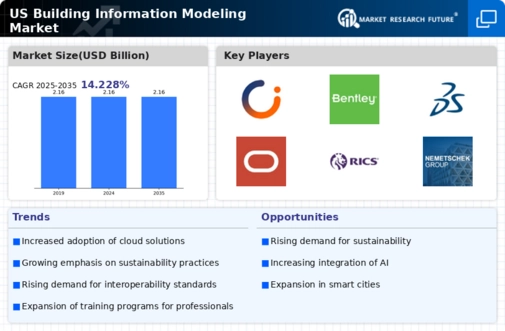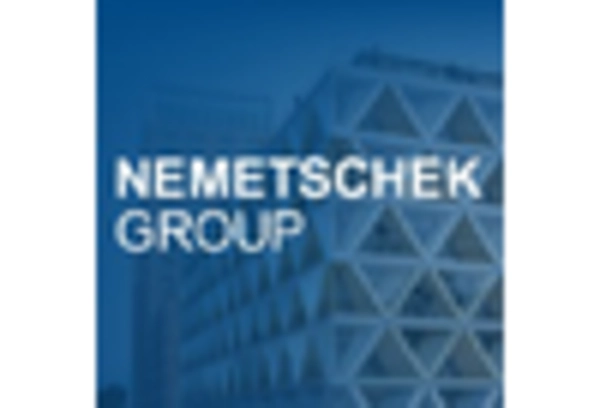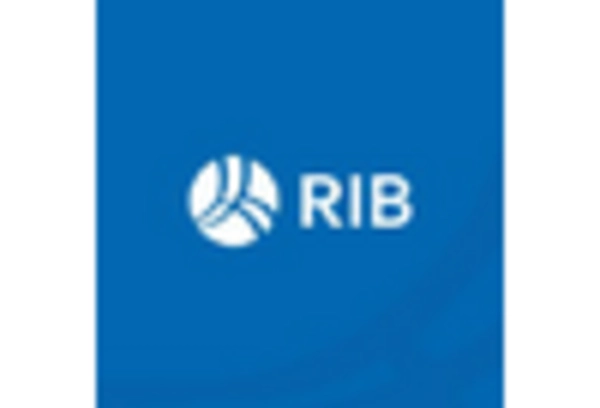Growing Emphasis on Cost Reduction
Cost reduction remains a critical driver in the building information-modelling market, as stakeholders seek to optimize their expenditures. The construction industry is notorious for budget overruns, and building information-modelling offers a solution by enabling better cost estimation and resource allocation. By utilizing these tools, companies can identify potential cost-saving opportunities early in the project lifecycle. Recent studies indicate that projects employing building information-modelling can reduce costs by up to 20%. This financial incentive is likely to encourage more firms to adopt these technologies, as they strive to remain competitive in a market where profit margins are often tight. The focus on cost efficiency is thus a significant factor propelling the growth of the building information-modelling market.
Government Initiatives and Regulations
Government initiatives and regulations play a pivotal role in shaping the building information-modelling market. In the US, various federal and state-level policies are increasingly mandating the use of advanced modelling technologies in public infrastructure projects. For instance, the Federal Highway Administration has encouraged the adoption of building information-modelling for transportation projects, which has led to a more structured approach to project delivery. This regulatory push is expected to drive market growth, as compliance with these standards necessitates the use of sophisticated modelling tools. Furthermore, the potential for funding and incentives for projects that utilize building information-modelling can enhance its attractiveness to contractors and developers, thereby expanding its market presence.
Increased Focus on Safety and Risk Management
Safety and risk management are becoming increasingly critical in the building information-modelling market. As construction sites are inherently hazardous, the integration of modelling technologies can enhance safety protocols and risk assessment processes. By simulating various scenarios, stakeholders can identify potential hazards and develop mitigation strategies before actual construction begins. This proactive approach not only protects workers but also minimizes project delays and associated costs. The US construction industry has seen a rise in safety regulations, which further emphasizes the need for effective risk management solutions. Consequently, the building information-modelling market is likely to benefit from this heightened focus on safety, as companies seek to leverage technology to create safer work environments.
Technological Advancements in Modelling Tools
Technological advancements are a driving force in the building information-modelling market, as innovations continue to enhance the capabilities of modelling tools. The introduction of artificial intelligence, machine learning, and augmented reality is transforming how projects are designed and executed. These technologies enable more accurate simulations and visualizations, allowing stakeholders to make informed decisions throughout the project lifecycle. The US market is witnessing a rapid evolution in software solutions, with many companies investing heavily in research and development to stay ahead of the competition. As these advancements become more accessible, the adoption of building information-modelling tools is expected to increase, further solidifying their role in modern construction practices.
Rising Demand for Efficient Project Management
The building information-modelling market is experiencing a notable surge in demand for efficient project management solutions. This trend is driven by the need for enhanced collaboration among stakeholders, which is crucial in the construction industry. As projects become increasingly complex, the ability to manage timelines, budgets, and resources effectively is paramount. According to recent data, the construction sector in the US is projected to grow at a CAGR of approximately 5.4% from 2023 to 2030. This growth is likely to propel the adoption of building information-modelling tools that facilitate real-time updates and communication, thereby improving overall project outcomes. The integration of these tools not only streamlines workflows but also reduces the likelihood of costly errors, making them indispensable in modern construction practices.

















Leave a Comment